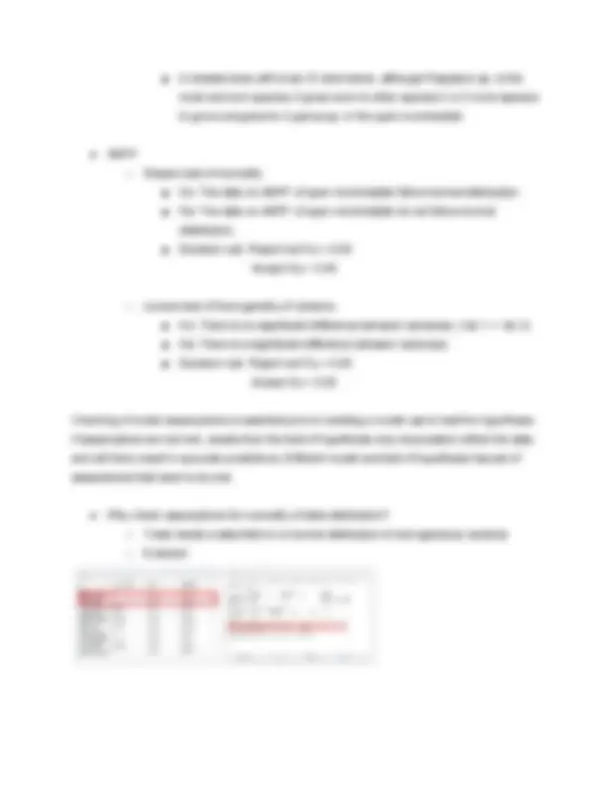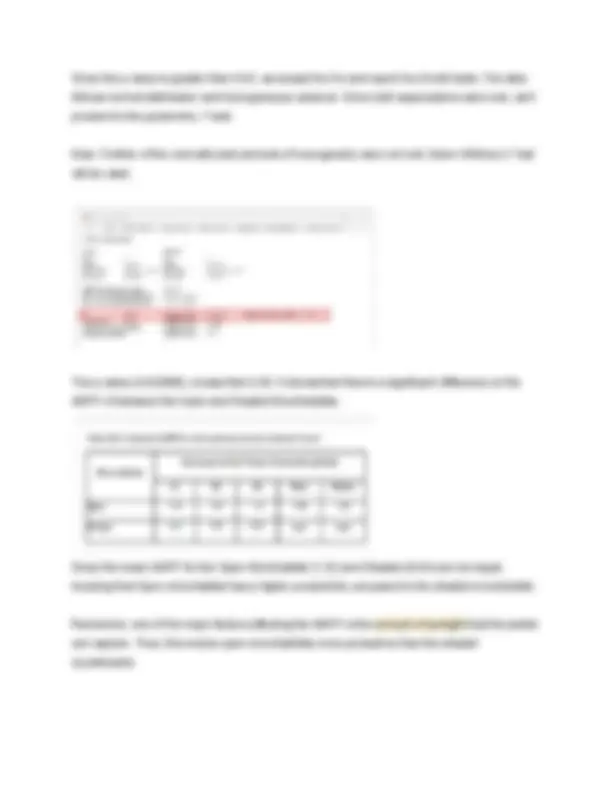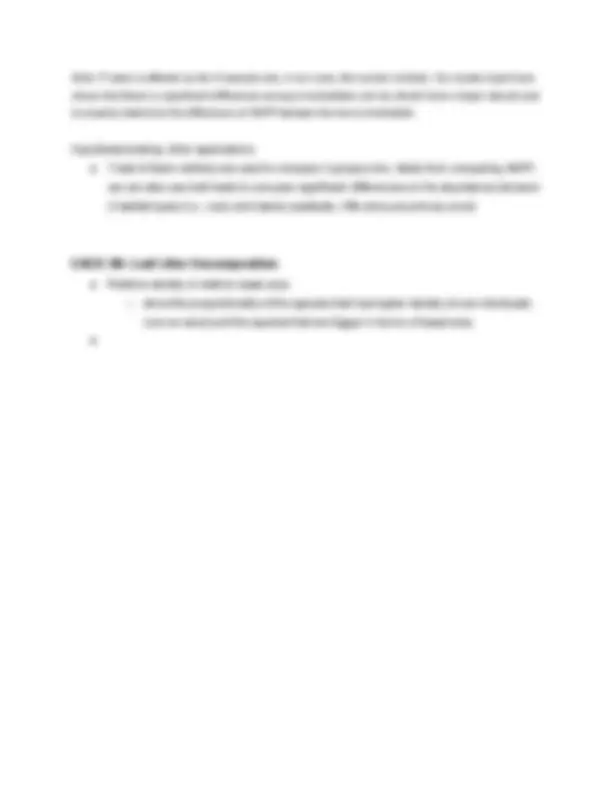





Study with the several resources on Docsity

Earn points by helping other students or get them with a premium plan


Prepare for your exams
Study with the several resources on Docsity

Earn points to download
Earn points by helping other students or get them with a premium plan
Community
Ask the community for help and clear up your study doubts
Discover the best universities in your country according to Docsity users
Free resources
Download our free guides on studying techniques, anxiety management strategies, and thesis advice from Docsity tutors
ECOLOGY COMMUNITY PRODUCTIVITY LEAF LITTER PRODUCTION STATISTICAL TESTS
Typology: Study notes
1 / 5

This page cannot be seen from the preview
Don't miss anything!




● Community - assemblage of species population occurring together in same time & place ○ Collective properties: species diversity, composition, dominance, standing biomass, productivity ○ Emergent properties: food web structure ● Community ecology - interactions of organisms; adaptation to physical envi ○ competition, predation, parasitism etc.
○ Terrestrial - differences determined by nature of vegetation & climatic conditions (Biome) ■ Grassland ■ Tropical rainforest ○ Aquatic - differences determined by physical & chemical properties of water ■ Depth: shallow or deep ■ Flow of water: lotic or lentic ■ Salinity: freshwater or marine ■ Nutrient content: oligotrophic or eutrophic ● Ecological succession - change in species composition & community structure and func over time; unidirectional, sequential change in relative dominance of species ○ Primary : on areas devoid of/unchanged by organisms ○ Secondary : proceeds from stage in which orgs are already present ● Sampling - data collection from subset to understand the whole; depends on taxon & sampling unit ● Sampling sufficiency - species accumulation curve; “how to know if i sampled enough”
● Grassland - grasses, sedges, herbaceous plants ○ Natural: climax community ○ Seral: pioneer / 1st sequence ■ Succession (primary vs secondary seral) Describing grassland:
Since the p-value is greater than 0.05, we accept the Ho and reject Ha of both tests. The data follows normal distribution and homogeneous variance. Since both assumptions were met, we’ll proceed to the parametric, T-test. Note: If either of the normality test and test of homogeneity were not met, Mann Whitney U Test will be used. The p-value (0.022688), is less than 0.05. It shows that there’s a significant difference on the ANPP of between the Open and Shaded Microhabitats. Since the mean ANPP for the Open Microhabitat (1.32) and Shaded (0.64) are not equal, implying that Open microhabitat has a higher productivity compared to the shaded microhabitat. Remember, one of the major factors affecting the ANPP is the amount of sunlight that the plants can capture. Thus, this makes open microhabitats more productive than the shaded counterparts.
Note: P-value is affected by the N (sample size, in our case, the number of plots). Our results might have shown that there’s a significant differences among microhabitats, but we should have a larger sample size to properly determine the differences of ANPP between the two microhabitats. Hypothesis testing: other applications ● T-test & Mann-whitney are used to compare 2 groups only. Aside from comparing ANPP, we can also use both tests to compare significant differences on the abundance between 2 habitat types (i.e., rocky and sandy substrate, riffle and pool primary prod)
● Relative density & relative basal area ○ show the proportionality of the species that has higher density (more individuals over an area) and the species that are bigger in terms of basal area. ●